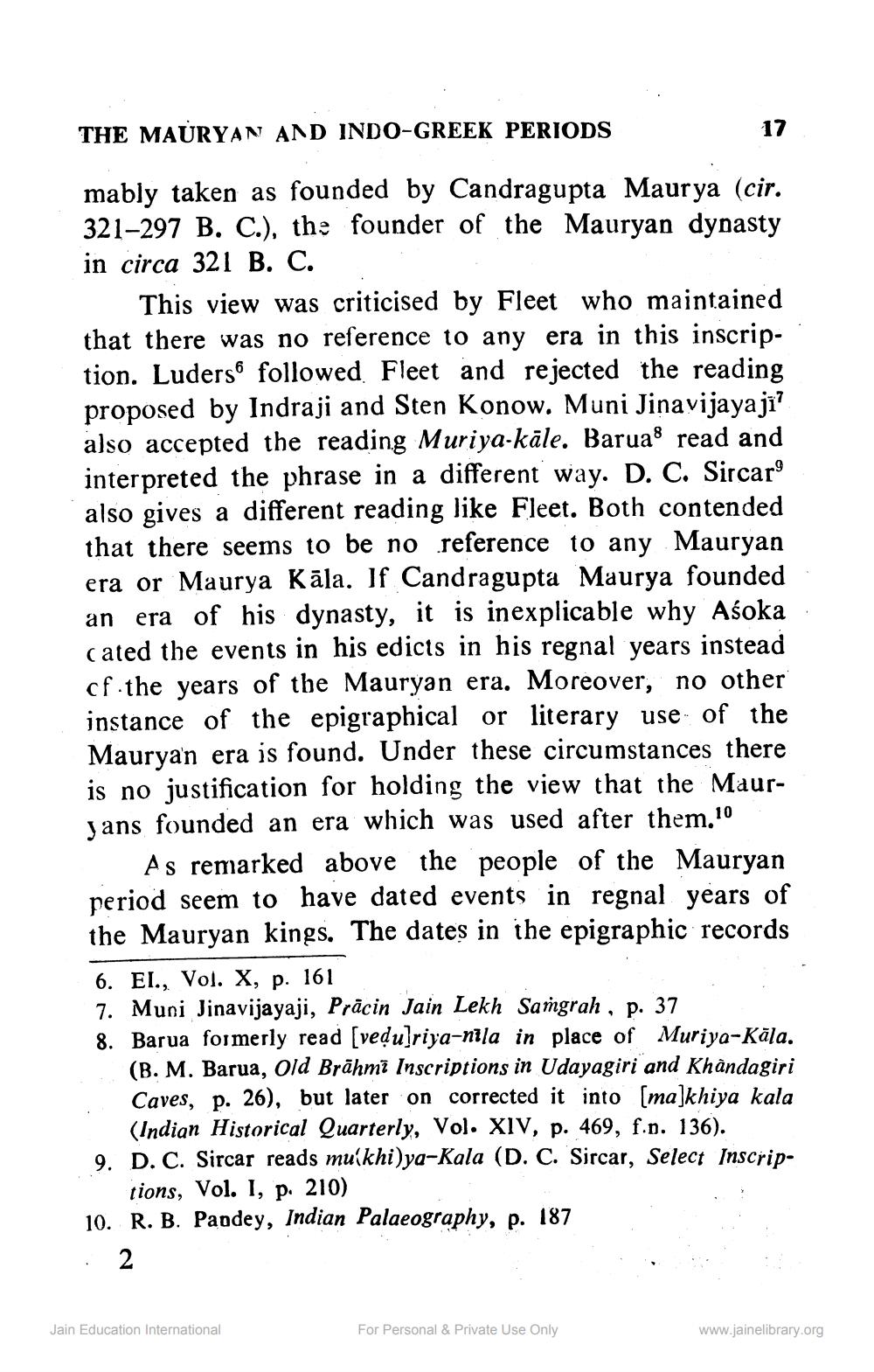________________
THE MAURYAN AND INDO-GREEK PERIODS
17
mably taken as founded by Candragupta Maurya (cir. 321–297 B. C.), the founder of the Mauryan dynasty in circa 321 B. C.
This view was criticised by Fleet who maintained that there was no reference to any era in this inscription. Luders followed Fleet and rejected the reading proposed by Indraji and Sten Konow. Muni Jinavijayaji? also accepted the reading Muriya-kāle. Barua8 read and interpreted the phrase in a different way. D. C. Sircaro also gives a different reading like Fleet. Both contended that there seems to be no reference to any Mauryan era or Maurya Kāla. Jf Candragupta Maurya founded an era of his dynasty, it is inexplicable why Aśoka Cated the events in his edicts in his regnal years instead cf the years of the Mauryan era. Moreover, no other instance of the epigraphical or literary use of the Maurya'n era is found. Under these circumstances there is no justification for holding the view that the Mauryans founded an era which was used after them.10
As remarked above the people of the Mauryan period seem to have dated events in regnal years of the Mauryan kings. The dates in the epigraphic records 6. El., Vol. X, p. 161 7. Muni Jinavijayaji, Prācin Jain Lekh Samgrah , p. 37 8. Barua formerly read (ved ulriya-nila in place of Muriya-Kāla.
(B. M. Barua, Old Brāhmi Inscriptions in Udayagiri and Khåndagiri Caves, p. 26), but later on corrected it into [ma]khiya kala
(Indian Historical Quarterly, Vol. XIV, p. 469, f.n. 136). 9. D. C. Sircar reads muskhi)ya-Kala (D. C. Sircar, Select Inscrip
jions, Vol. I, p. 210) 10. R. B. Pandey, Indian Palaeography, p. 187
Jain Education International
For Personal & Private Use Only
www.jainelibrary.org




